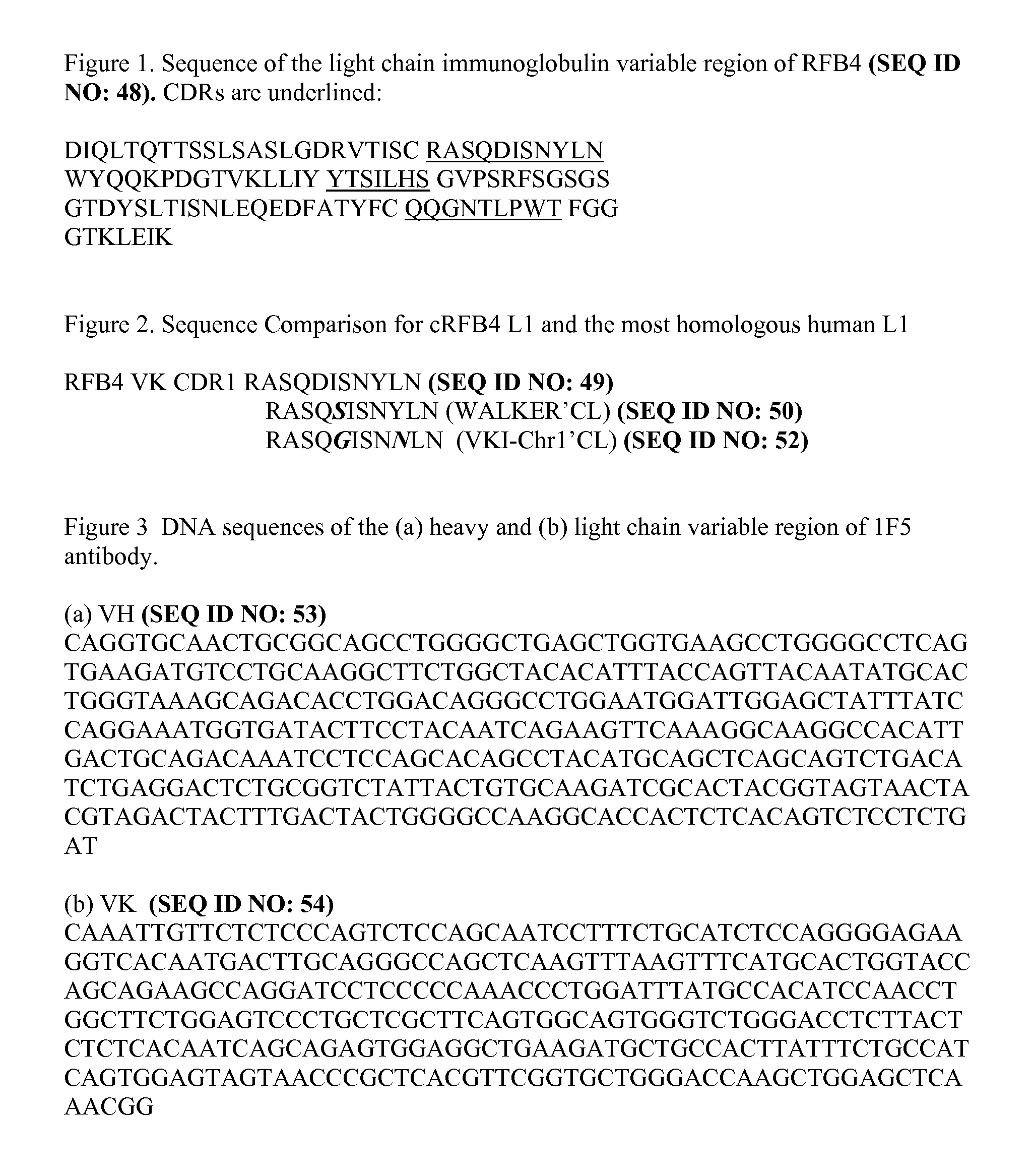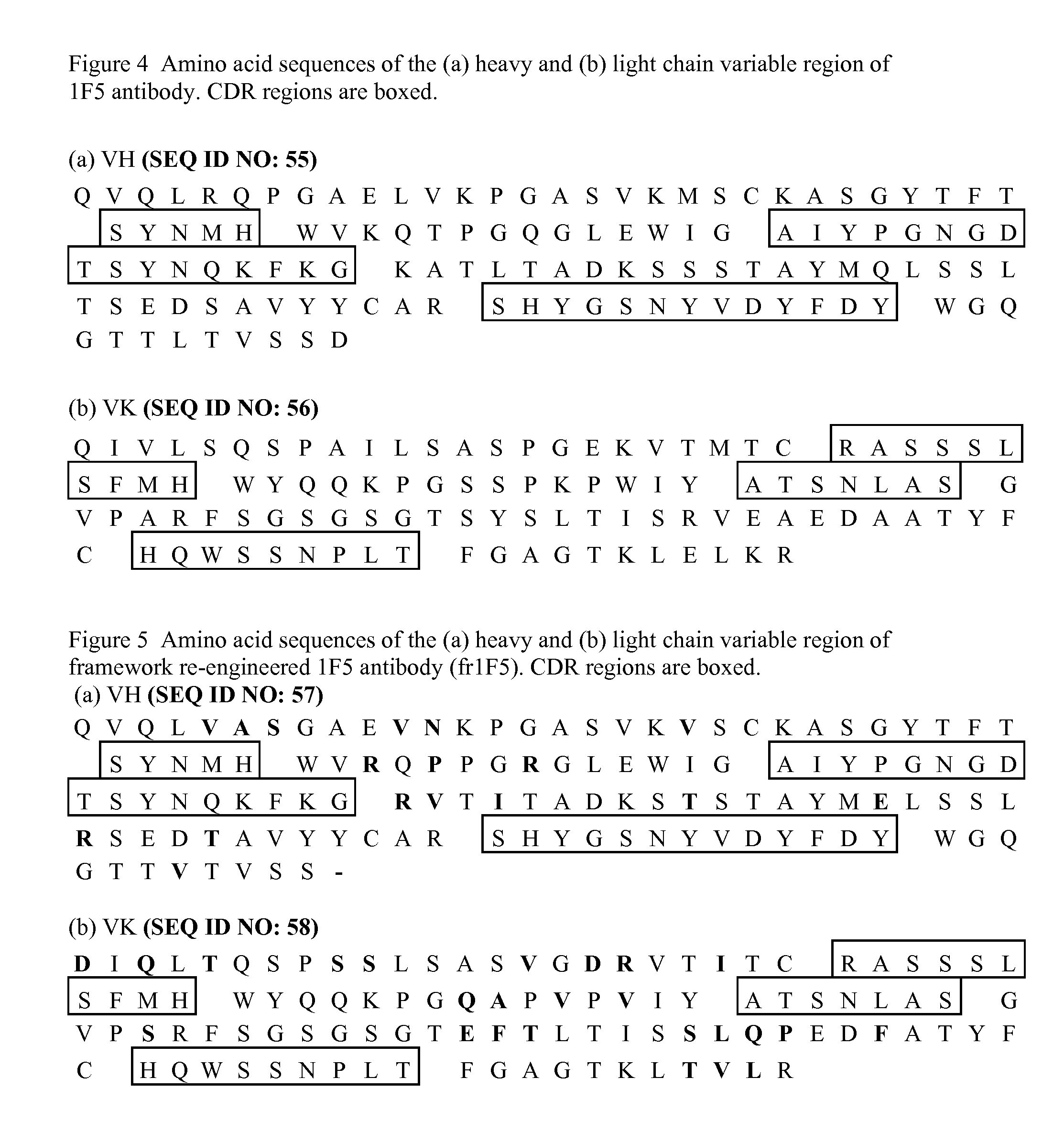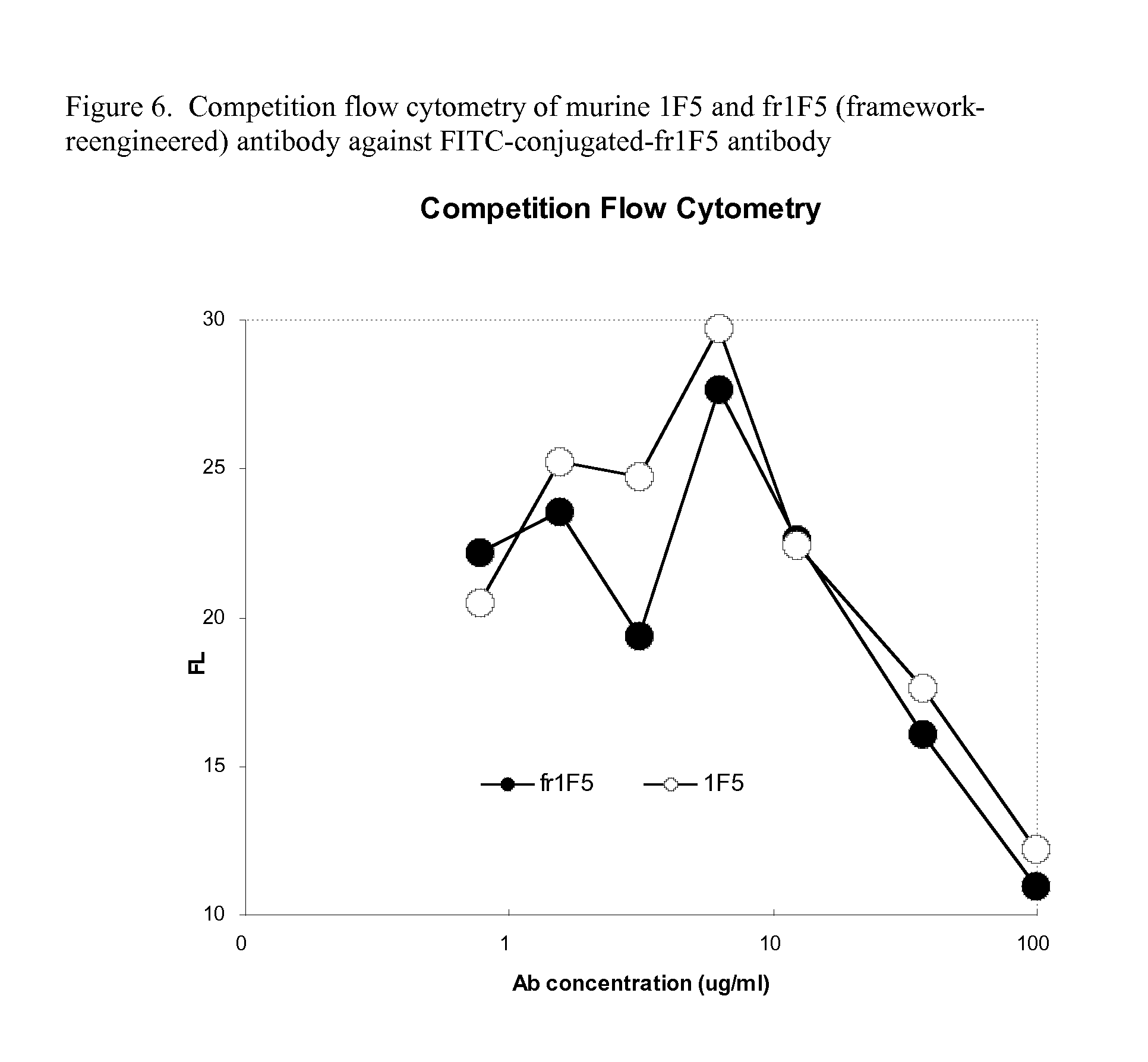Functional humanization of complementarity determining regions (CDRS)
- Summary
- Abstract
- Description
- Claims
- Application Information
AI Technical Summary
Benefits of technology
Problems solved by technology
Method used
Image
Examples
example 1
[0095]RFB4 is a publicly known antibody that targets the human CD22 antigen. The variable region sequences of the heavy (VH) and light (VL) chains are published (Mansfield et al. 1997. Recombinant RFB4 Immunotoxins Exhibit Potent Cytotoxic Activity for CD22-Bearing Cells and Tumors. Blood 80:2020-2028). The humanization of the CDR1 of RFB4 VK region in a chimeric RFB4 (cRFB4) will be used to illustrate the concept of the present invention (Yang et al. 2006. Construction and characterization of recombinant anti-B lymphoma chimeric antibody. Chinese J. New Drugs 15(3):186-192). The VK amino acid sequence is as shown in FIG. 1. The CDR1 sequence of cRFB4 VK is used to compare with the human L1 sequences in the Kabat's data base (Kabat et al. 1991. Sequences of Proteins of Immunological Interest. US Department of Health and Human Services). Two human L1 sequences with high homology to cRFB4 L1 are identified; they are from WALKER′CL and VKI-Chr1′CL (FIG. 2). The L1 sequences of WALKER′C...
example 2
[0106]1F5 is another publicly known antibody that targets the human CD20 antigen. The variable region sequences of the heavy (VH) and light (VL) chains are published (Shan et al. 1999. Characterization of scFv-Ig constructs generated from the anti-CD20 mAb 1F5 using linker peptides of varying lengths. J. Immuol. 162:6589-6595). The variable region sequences of 1F5 is obtained either by oligonucleotide-based gene synthesis techniques with the published sequences, or alternatively directly from the 1F5 hybridoma as follows:
[0107]1. Briefly, the hybridoma for 1F5 was obtained from American Type Culture Collection (ATCC#HB-9645; lot #221900). RNA was extracted from 3×107 hybridoma cells using a Track mRNA Isolation Kit (Invitrogen). cDNA was then prepared by a cDNA Cycle Kit (Invitrogen) using the primer CH1B (5′ ACA GTC ACT GAG CTG G 3′) (SEQ ID NO: 7) that is specifically prime to the CH1 constant region of mouse IgG and the primer Ck3BH1 (5′ GCC GGA TCC TCA CTG GAT GGT GGG AAG ATG GA...
PUM
| Property | Measurement | Unit |
|---|---|---|
| Fraction | aaaaa | aaaaa |
| Affinity | aaaaa | aaaaa |
Abstract
Description
Claims
Application Information
 Login to View More
Login to View More - R&D
- Intellectual Property
- Life Sciences
- Materials
- Tech Scout
- Unparalleled Data Quality
- Higher Quality Content
- 60% Fewer Hallucinations
Browse by: Latest US Patents, China's latest patents, Technical Efficacy Thesaurus, Application Domain, Technology Topic, Popular Technical Reports.
© 2025 PatSnap. All rights reserved.Legal|Privacy policy|Modern Slavery Act Transparency Statement|Sitemap|About US| Contact US: help@patsnap.com



